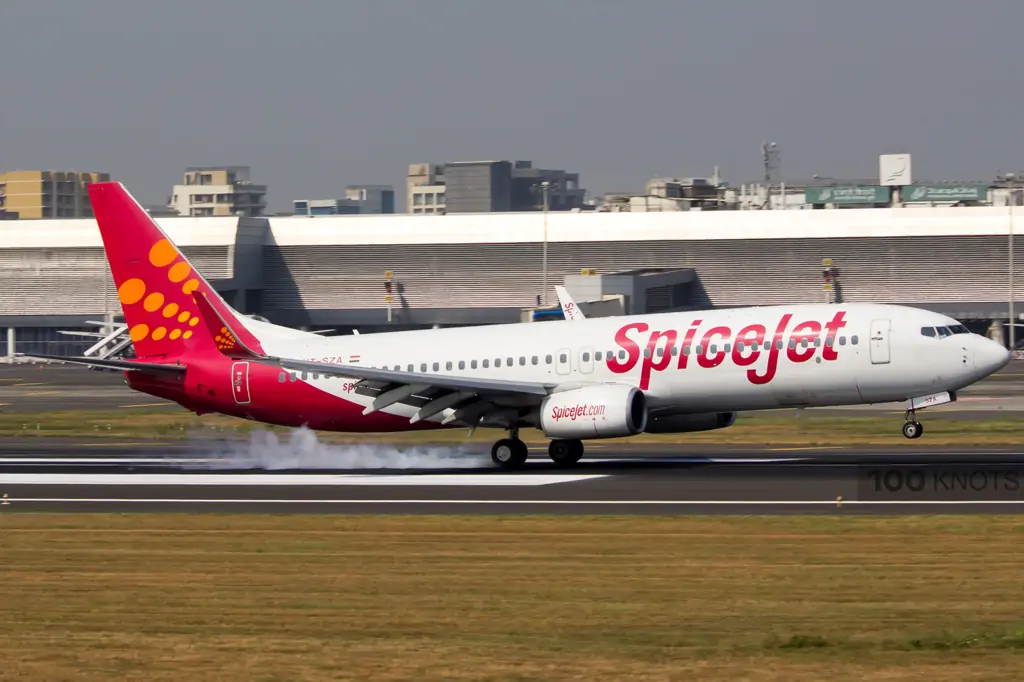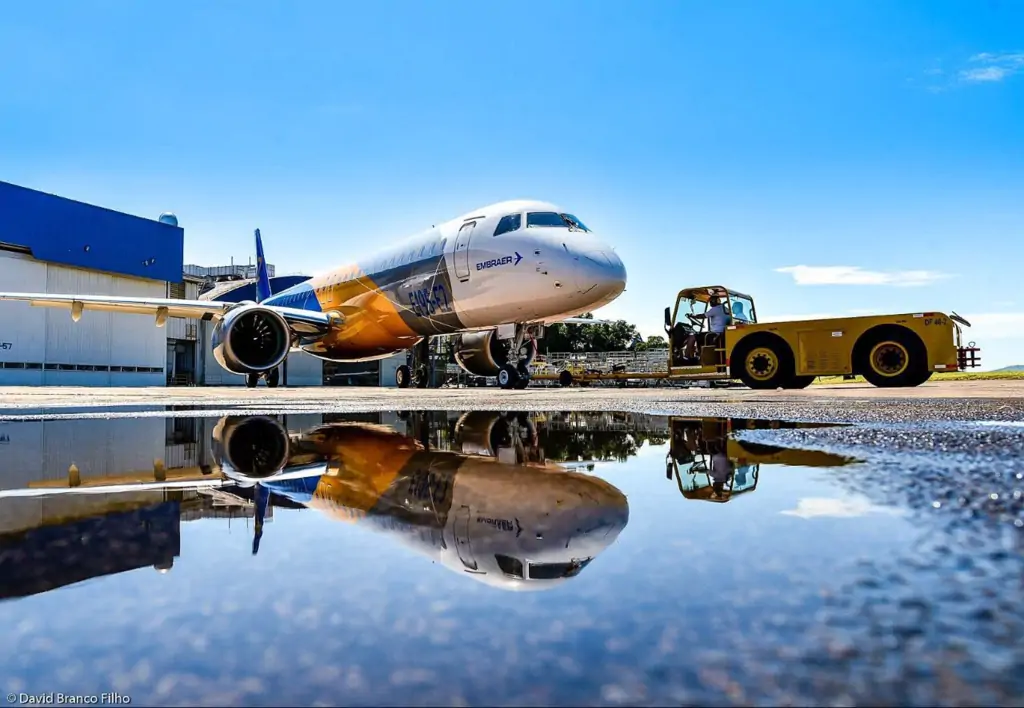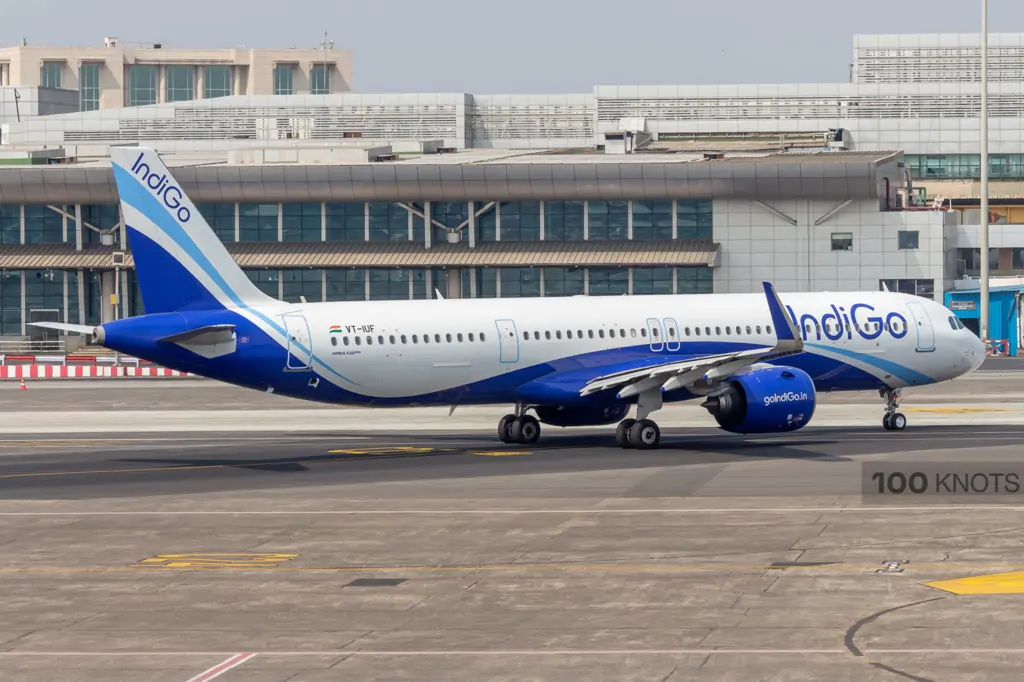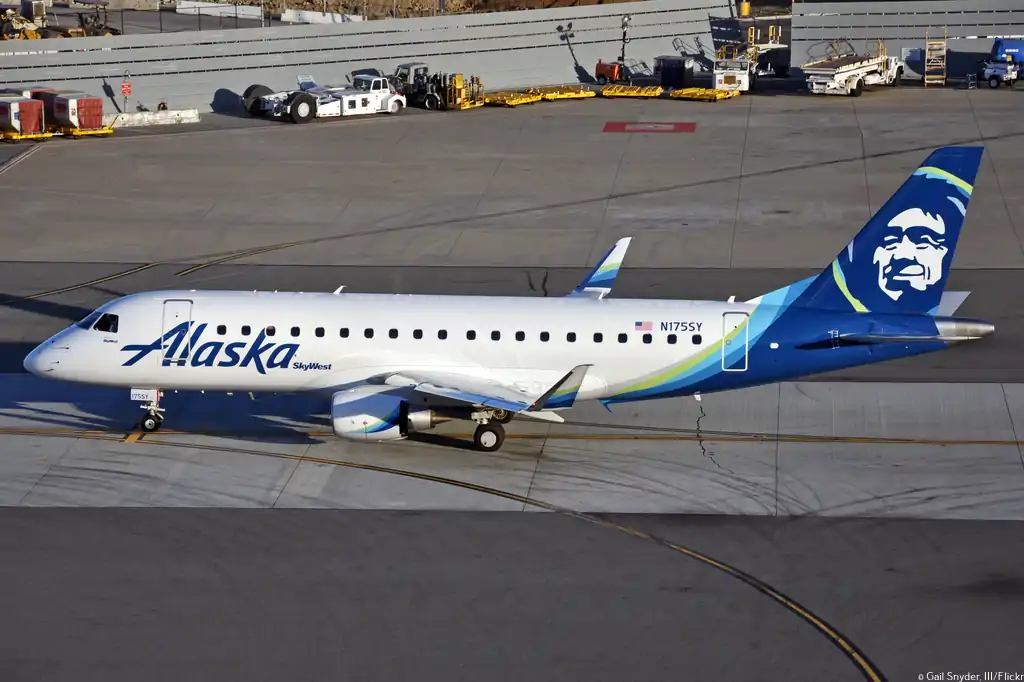In a recent legal development, Alterna Aviation's special purpose vehicle (SPV) has abandoned its insolvency bid against SpiceJet in the National Company Law Tribunal (NCLT). Instead, the lessor is now turning its attention to the Delhi High Court to recover over USD 11 million awarded to it by the UK High Court. This shift marks a new chapter in the ongoing dispute between the two entities, shedding light on the complexities of international lease agreements and the legal landscape surrounding them.
Background
The dispute between Alterna Aviation and SpiceJet stems from a lease disagreement involving two B737-800 aircraft. The UK High Court, on March 2, 2023, ruled in favor of Alterna, awarding them USD 11.1 million and GBP 265,000. Despite the court's decision, SpiceJet neither appealed the ruling nor made any payments, prompting Alterna to seek legal recourse to enforce the judgment.
NCLT Withdrawal and Delhi High Court Pursuit
On March 18, 2024, the NCLT Delhi bench accepted Alterna's application to withdraw the insolvency matter against SpiceJet. This decision allows Alterna to pursue a fresh application in the Delhi High Court to recover the awarded funds. While Alterna viewed the NCLT as the appropriate forum for debt recovery under India's Insolvency and Bankruptcy Code (IBC), SpiceJet's counsel argued otherwise, emphasizing that the IBC was not designed for debt recovery purposes.
Legal Battles and Forum Shopping
The NCLT's recent decisions in favor of SpiceJet in insolvency matters have influenced Alterna's strategic shift towards the Delhi High Court. With the court's reputation as a favored forum for litigants seeking to enforce judgments and settle disputes against SpiceJet, Alterna aims to leverage this legal avenue to secure its rightful compensation. This move underscores the significance of forum shopping in complex legal disputes, where parties seek jurisdictions perceived to be more favorable to their interests.
SpiceJet's Legal Defense and Settlements
SpiceJet has vigorously defended itself against insolvency petitions filed by various lessors, including Wilmington Trust SP Services, Willis Lease Finance, Aircastle, and Celestial Aviation Services Limited. Additionally, the airline has opted for out-of-court settlements with several lessors, including AerCap and Cross Ocean Partners. These legal maneuvers highlight SpiceJet's efforts to navigate the challenging terrain of lease disputes while safeguarding its financial stability.
Implications and Conclusion
The legal battle between Alterna Aviation and SpiceJet reflects the complexities inherent in international lease agreements and the diverse legal frameworks governing them. As the dispute unfolds in the Delhi High Court, stakeholders will closely monitor the proceedings and their potential implications for both parties. Ultimately, the outcome of this legal saga will shape the future landscape of lease agreements in the aviation industry, emphasizing the importance of comprehensive contractual agreements and effective dispute resolution mechanisms.
With Inputs from ch-aviation
Read next
Brazilian aircraft manufacturer Embraer has set ambitious goals for 2024, projecting a surge in aircraft deliveries despite grappling with persistent supply chain challenges. CEO Francisco Gomes Neto outlined the company's expectations during a recent call with analysts, shedding light on both the promising prospects and the hurdles it faces in the year ahead.
Navigating Supply Chain Turbulence
Embraer, the world's third-largest planemaker, foresees delivering between 125 and 135 executive jets in 2024, marking a notable increase from the 115 delivered in the previous year. Similarly, the company anticipates a rise in deliveries from its commercial aviation segment, with estimates ranging between 72 and 80 planes, up from 64 aircraft in 2023.
However, Gomes Neto emphasized that these figures could have been even higher if not for the persistent disruptions in the supply chain. Despite improvements seen in 2023, the company continues to grapple with shortages of essential parts, hampering its production capacity and leading to delays at the start of the year.
Conservative Commitments Amidst Uncertainty
Embraer's cautious optimism is evident in its approach to forecasting, as it bases its delivery projections on conservative commitments from suppliers. This stance reflects a prudent strategy to mitigate the impact of potential supply chain constraints and uncertainties.
CFO Antonio Garcia noted that while the estimated free cash flow of at least $220 million for 2024 may appear conservative, it reflects the company's commitment to providing realistic guidance. As visibility improves throughout the year, Embraer intends to update its guidance accordingly.
Financial Outlook and Performance
The company forecasts a significant growth trajectory in its annual consolidated revenue, with expectations ranging between $6.0 billion to $6.4 billion, representing an increase of up to 21.5% compared to the previous year. In 2023, Embraer's revenue stood at $5.27 billion, falling within its estimated range.
Despite grappling with supply chain challenges, Embraer reported a notable uptick in adjusted net profit for the fourth quarter of 2023, marking a 55% increase to 350.6 million reais ($70.20 million). Moreover, the company's net debt, excluding its electric aircraft subsidiary Eve, decreased to 3.9 billion reais, driven by significant positive free cash flow generated during the period.
Conclusion: Charting a Course Amidst Uncertainty
Embraer's ambitious growth targets for 2024 underscore its resilience and determination to navigate through the challenges posed by supply chain disruptions. While the company remains cautiously optimistic, it acknowledges the need to remain adaptable and responsive to evolving market dynamics. As it continues to innovate and optimize its operations, Embraer remains poised to capitalize on emerging opportunities and cement its position as a key player in the global aviation industry.
With Inputs from Reuters
Read next
Akasa Air and Canada's CAE have joined hands to train the airline's pilots at its facilities in India, the airline said in a statement.
Under this agreement, Akasa Air will leverage CAE’s best-in-class training facilities, instructors, and latest-generation full-flight simulators for the next 15 years, fulfilling the airline’s commitment to develop the world’s best-trained pilots who meet the highest training standards.
CAE has trained Akasa Air pilots since the start of the airline’s operations in 2022, providing world-class infrastructure and a rigorous and immersive simulation training curriculum that enables them to meet superior levels of proficiency, it added.
Vinay Dube, Founder and CEO, Akasa Air said, “We are pleased to further cement our partnership with CAE, one of the world’s leading pilot training technology providers. Akasa Air is built on a strong foundation of reliability and practices the highest standards of safety and precision in global aviation. Our approach to learning and development is rooted in developing a future-ready workforce to gain a competitive advantage in the dynamic aviation landscape. As we receive a substantial influx of aircraft in the coming decade, this partnership will provide us access to the world’s best training facilities for the next 15 years and will help us build a team of highly experienced and skilled pilots, as we continue our commitment of becoming one of the world’s safest airlines.”
“This long-term agreement is a testament to the quality of the pilot training we deliver and the strong relationship we have built with Akasa in a relatively short time,” said Nick Leontidis, CAE’s Group President, Civil Aviation. “In the fast-growing Indian aviation sector, CAE has the infrastructure and resources to support the expansion of airline partners, like Akasa Air, in the region.”
CAE has a long and significant presence in India, operating 13 state-of-the-art simulators in three commercial aviation training centres and delivering essential pilot training and training services to airlines in India. Last year, CAE became a Boeing Authorized Training Provider for Boeing’s Competency-Based Training and Assessment (CBTA) curriculum in India.
Read next
Goa-based regional airline Fly91 has commenced commercial operations with first flight taking off from Goa to Bengaluru on Monday.
It also operated its maiden flight to Sindhudurg from Bengaluru on the same day and will be offering a special fare of Rs 1991 (all inclusive) on all the sectors with snacks & beverages on-board at a flat rate of just Rs 100 per item.
It will also be allowing change and cancellation of flight tickets at only Rs 499 per passenger per sector for a limited period.
Manoj Chacko, Managing Director and Chief Executive Officer, Fly91 said, "We at Fly91 are incredibly proud to launch our inaugural commercial flight, symbolizing our commitment to connecting India in a way that has never been done before. This inaugural flight is not just about reaching a destination; it's about taking flight with the dreams and aspirations of a nation.”
Fly91 is initially offering flights between Goa, Hyderabad, Bengaluru and Sindhudurg, with plans to start operations to Agatti, Jalgaon and Pune in April. The airline will fly between Goa and Bengaluru on Monday, Friday and Saturday. Similar number of flights will be operated per week between Bengaluru and Sindhudurg. It will also fly between Goa and Hyderabad, and between Sindhudurg and Hyderabad twice a week.
“We understand that Indian travelers deserve good travel experiences. That's why FLY91 has been built from the ground up with a focus on comfort, and efficient service,” said Mr. Chacko.
The airline currently has two ATR 72-600 aircraft with four more aircraft expected in the coming months. This steady pipeline of aircraft induction will help the airline establish a strong pan-India presence, focused around five zones across the country.
The airline has been allocated its first set of routes under the government's Regional Connectivity Scheme (RCS) UDAN. The routes include Sindhudurg, Jalgaon, Nanded in Maharashtra and Agatti in Lakshadweep, along with other business and leisure destinations, namely Bengaluru, Goa, Hyderabad and Pune.
Read next
IndiGo will add Agatti, the island situated in the Lakshadweep archipelago, as its 88th domestic and 121st overall destination in its network, the airline said in a statement
IndiGo will start operations between Bengaluru-Agatti, effective from March 31st with flights leaving Bengaluru at around 1030 am and from Agatti at around 130 pm.
Vinay Malhotra, Head of Global Sales at IndiGo, said, “We are excited to announce Lakshadweep, India’s smallest Union Territory, as IndiGo's 88th domestic destination. The natural landscapes, the sandy beaches and the abundance of flora & fauna are bound to attract people to explore the pristine beauty of the archipelago. The launch of these new flights would not only further strengthen Lakshadweep’s position on the country’s aviation map but also enhance travel & tourism. As India’s leading carrier, we remain committed to delivering on our promise of providing affordable, on-time, courteous, and hassle-free travel experiences.”
One of the most popular islands of Lakshadweep, Agatti Island is a 6 km long land terrain blessed with aquatic diversity. Home to the archipelago's only airstrip, Agatti Island connects Lakshadweep to the rest of India. Known for its stunning beaches, considered by many to be amongst the best in the world, Agatti is popular amongst those looking for a bit of deep-sea fishing, scuba diving, sailing, skiing and even kayaking. The island also serves as an ideal base for exploring the uninhabited and serene isles of Bangaram, Pitti, Thinnakara, Parali-I and Parali-II which lie in close proximity.
Read next
In the dynamic landscape of the aviation industry, mergers and acquisitions often shape the competitive landscape. Recently, Alaska Airlines made headlines with its ambitious plan to acquire Hawaiian Airlines, a move set to redefine the airline market. Despite regulatory hurdles and the recent rejection of another merger proposal, Alaska remains optimistic about the synergies and opportunities that lie ahead.
Alaska's Strategic Vision & The Proposed Merger
At the forefront of this endeavor is Ben Minicucci, the Chief Executive of Alaska Airlines. Speaking at the JP Morgan conference, Minicucci emphasized the distinctiveness of their proposal compared to recent merger attempts. With Alaska positioned as a low-cost carrier, the acquisition of Hawaiian Airlines promises a unique combination that aims to bolster competitiveness and offer enhanced services to passengers.
Alaska's announcement in December 2023 to acquire Hawaiian Airlines for approximately USD 1.9 billion signaled a strategic shift in the industry. The transaction, pending approval from the United States Department of Justice (DOJ), involves Alaska assuming a significant portion of Hawaiian's debts. Despite shareholder approval, the merger remains subject to regulatory scrutiny.
Navigating Regulatory Challenges & Distinctive Market Position
The recent DOJ veto of the proposed merger between Spirit Airlines and JetBlue Airways raised concerns about antitrust issues. However, Minicucci remains confident in Alaska's approach, highlighting the lack of overlap in the networks of Alaska and Hawaiian Airlines. The merger, he argues, will create a formidable competitor against the dominant players in the market.
A key aspect of the proposed merger is the preservation of both airline brands while leveraging synergies for mutual benefit. By adopting a unified operational framework, Alaska and Hawaiian Airlines aim to enhance efficiency without compromising individual identities. This approach contrasts with the "IAG model," ensuring a seamless integration while maintaining distinct branding.
Challenges and Opportunities Ahead
While the path to merger approval is not without obstacles, Alaska Airlines remains committed to providing additional information to the DOJ by May. The anticipated decision timeframe in June will shed light on the feasibility of the merger. Despite regulatory complexities, Minicucci underscores the positive implications of the merger, particularly in key markets such as Seattle Tacoma International and Honolulu.
Conclusion
As Alaska Airlines charts a course for merging with Hawaiian Airlines, the aviation industry braces for a transformational shift. With a strategic vision focused on differentiation and competitiveness, Alaska remains poised to navigate regulatory challenges and unlock new opportunities in the skies. As stakeholders await further developments, the merger holds the promise of reshaping the airline landscape for years to come.
With Inputs from ch-aviation








Comment